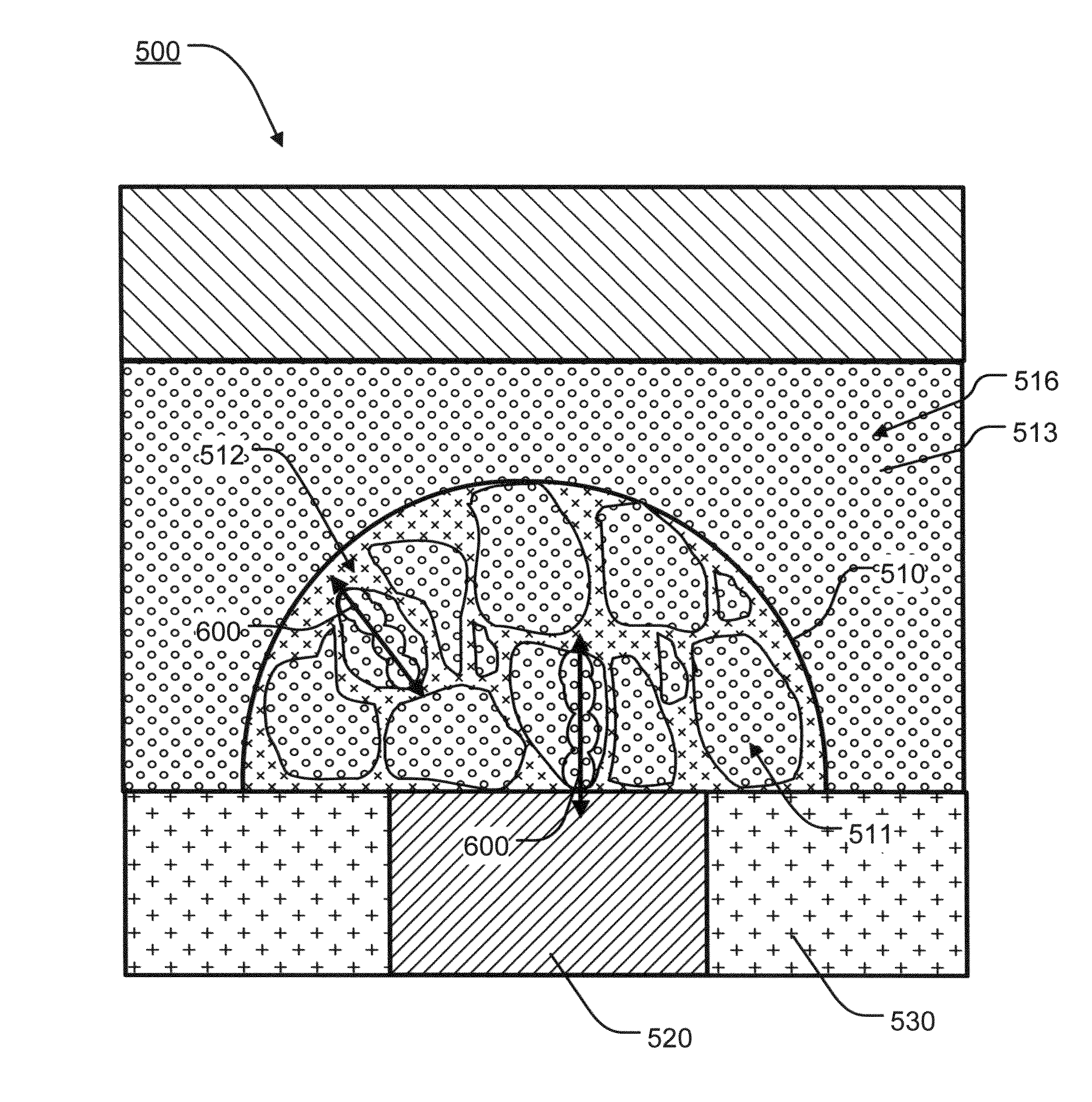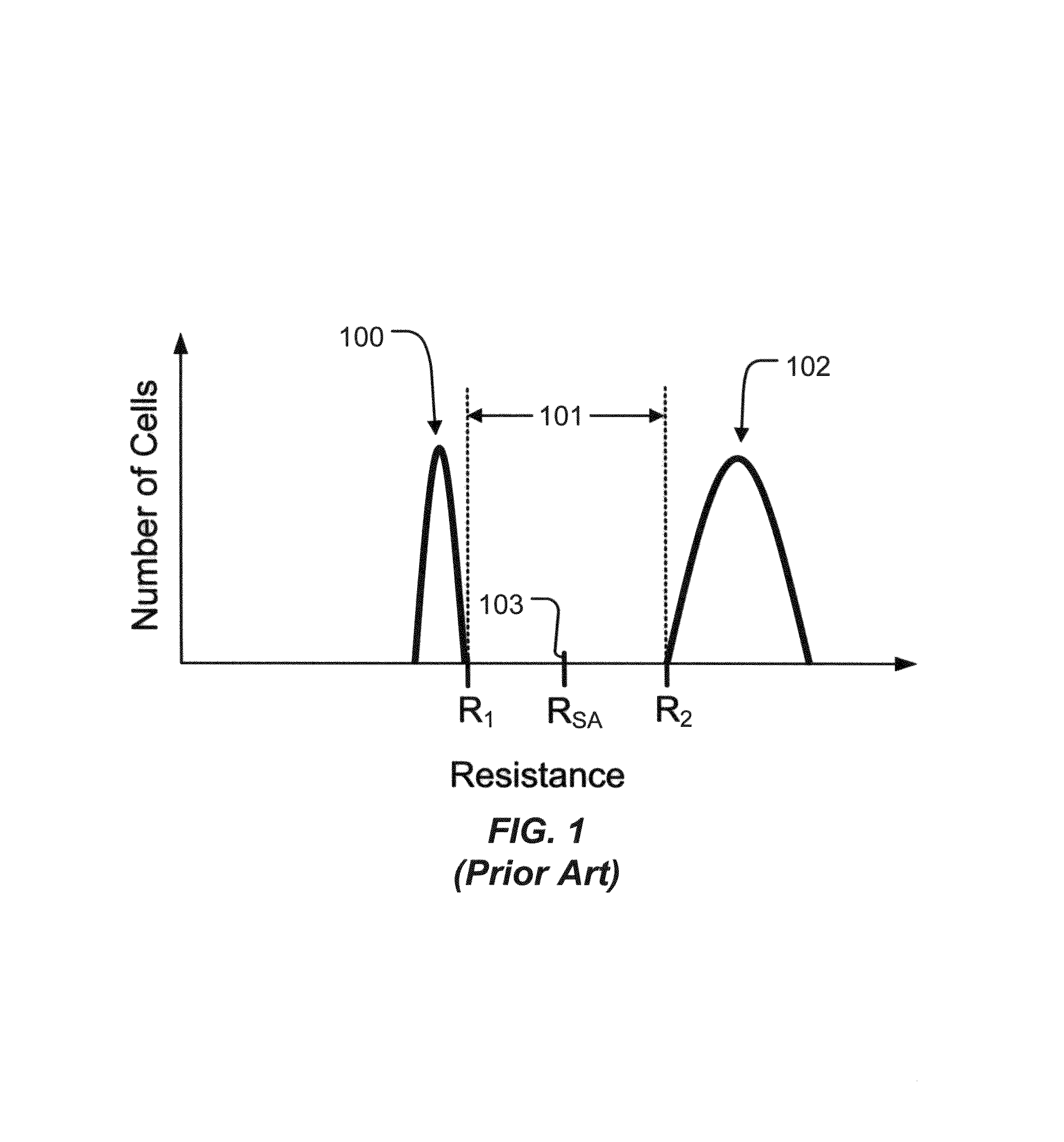Dielectric mesh isolated phase change structure for phase change memory
a phase change memory and dielectric mesh technology, applied in the field of memory devices, can solve the problems of electrical and mechanical reliability of the cell, endurance of the dimension phase change device, stress at the interface and within the gst material, etc., and achieve the effect of improving the memory cell and reducing the grain siz
- Summary
- Abstract
- Description
- Claims
- Application Information
AI Technical Summary
Benefits of technology
Problems solved by technology
Method used
Image
Examples
Embodiment Construction
[0039]The following description of the disclosure will typically be with reference to specific structural embodiments and methods. It is to be understood that there is no intention to limit the disclosure to the specifically disclosed embodiments and methods, but that the disclosure may be practiced using other features, elements, methods and embodiments. Preferred embodiments are described to illustrate the present disclosure, not to limit its scope, which is defined by the claims. Those of ordinary skill in the art will recognize a variety of equivalent variations on the description that follows. Like elements in various embodiments are commonly referred to with like reference numerals.
[0040]In phase change memory, data is stored by causing transitions in an active region of the phase change material between amorphous and crystalline phases. FIG. 1 is a graph of memory cells having one of two states (storing a single bit of data), a low resistance set (programmed) state 100 and a ...
PUM
| Property | Measurement | Unit |
|---|---|---|
| phase change | aaaaa | aaaaa |
| concentration | aaaaa | aaaaa |
| electrical resistivity | aaaaa | aaaaa |
Abstract
Description
Claims
Application Information
 Login to View More
Login to View More - R&D
- Intellectual Property
- Life Sciences
- Materials
- Tech Scout
- Unparalleled Data Quality
- Higher Quality Content
- 60% Fewer Hallucinations
Browse by: Latest US Patents, China's latest patents, Technical Efficacy Thesaurus, Application Domain, Technology Topic, Popular Technical Reports.
© 2025 PatSnap. All rights reserved.Legal|Privacy policy|Modern Slavery Act Transparency Statement|Sitemap|About US| Contact US: help@patsnap.com



